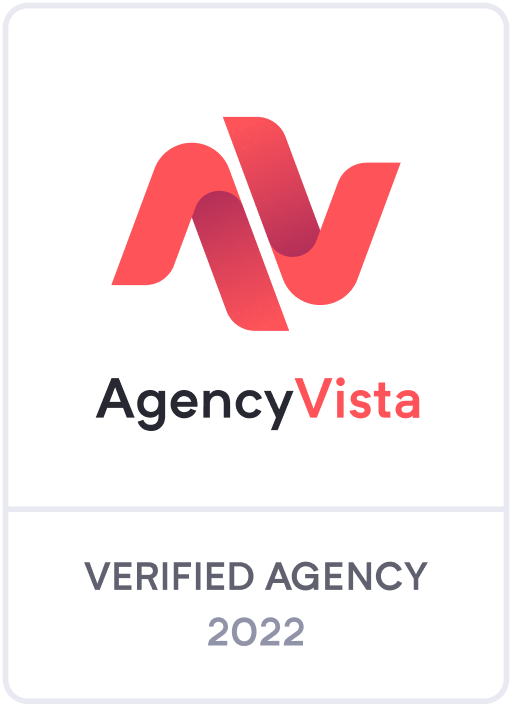Last week I wrote about the introduction of Google’s Knowledge Graph, a monumental change in the way we will search. This week, Google again dominates my thoughts with the roll out of their Google+ Local Pages. For the past few years, social, local, and mobile have been areas of intense interest to Google. Google has become a mobile powerhouse and has invested heavily in location data through Google Maps and related services such as Google Places.Google hasn’t done as well with social data, at least compared to Facebook. This may explain its crusade to make Google+ inescapable across its services. By wedding Google+ to services that people actually want to use, Google hopes to make its social network more vibrant and vital.When Google+ and Google+ Pages for business were introduced a little less than a year ago many people in local search began anticipating the day when Google would integrate Google Places and Google+ Pages. That project began yesterday, when Google announced the roll out of Google+ Local on it’s Google For Business Blog. “With the release of Google+ Local, rolling out today, we are bringing the community of Google+ to local business owners around the world. We aim to improve the way people discover new businesses, rediscover places they love, and share them with their friends across the web.”
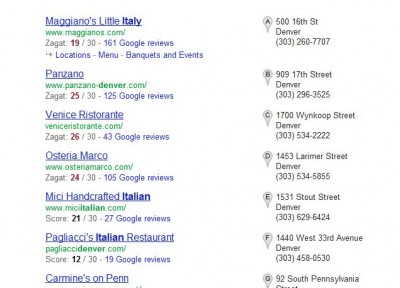 This Google+ Local integration into Search, Maps, and mobile, fulfills the goals Google VP of consumer products Marissa Mayer outlined a year ago. Marissa Mayer described Google’s social strategy as: “Our social strategy is to help users connect with each other.” Google Places pages have been entirely replaced by new Google+ Local pages. As of Wednesday, roughly 80 million Google Place pages worldwide have been automatically converted into Google+ Local pages, according to Google’s Marissa Mayer. It’s a dramatic change (for the better) though it will undoubtedly disorient some users and business owners. Also, in typical Google fashion, we see the integration of a past acquisition come into play as well. Almost a year ago, Google acquired Zagat and at that time said that “Zagat will be a cornerstone of our local offering—delighting people with their impressive array of reviews, ratings and insights…” Google director of product management Avni Shah said Google is using Zagat’s reviews to improve access to quality local information. “Each place you see in Google+ Local will now be scored using Zagat’s 30-point scale, which tells you all about the various aspects of a place so you can make the best decisions.”
This Google+ Local integration into Search, Maps, and mobile, fulfills the goals Google VP of consumer products Marissa Mayer outlined a year ago. Marissa Mayer described Google’s social strategy as: “Our social strategy is to help users connect with each other.” Google Places pages have been entirely replaced by new Google+ Local pages. As of Wednesday, roughly 80 million Google Place pages worldwide have been automatically converted into Google+ Local pages, according to Google’s Marissa Mayer. It’s a dramatic change (for the better) though it will undoubtedly disorient some users and business owners. Also, in typical Google fashion, we see the integration of a past acquisition come into play as well. Almost a year ago, Google acquired Zagat and at that time said that “Zagat will be a cornerstone of our local offering—delighting people with their impressive array of reviews, ratings and insights…” Google director of product management Avni Shah said Google is using Zagat’s reviews to improve access to quality local information. “Each place you see in Google+ Local will now be scored using Zagat’s 30-point scale, which tells you all about the various aspects of a place so you can make the best decisions.”
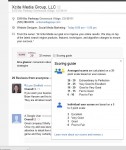 Marissa Mayer says that Zagat scores can express much more differentiation and nuance because they contain separate scores for food, service and atmosphere vs. a five star scale, which is forced to factor all those considerations into a single rating. The greater, 30-point spread, also prevents everything from converging at 3.5 stars. This may be one of the more dramatic changes that I have seen in recent years, at least as far as it’s impact on local business owners and marketers.
Marissa Mayer says that Zagat scores can express much more differentiation and nuance because they contain separate scores for food, service and atmosphere vs. a five star scale, which is forced to factor all those considerations into a single rating. The greater, 30-point spread, also prevents everything from converging at 3.5 stars. This may be one of the more dramatic changes that I have seen in recent years, at least as far as it’s impact on local business owners and marketers.
Some Of The Changes That Have Been Implemented
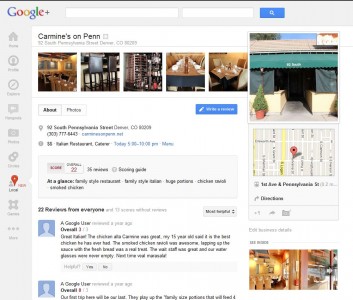
- Implementation of new Google+ Local pages for Google Places pages
- The integration and free availability of the entire archive of Zagat reviews
-
The appearance of a “Local” tab within Google+
-
The integration of Google+ Local pages across Google properties (search, Maps, mobile)
-
Integration of a circles filter to find reviews/recommendations from friends/family/colleagues
The old static Google Places pages are replaced by more dynamic Google+ Local Pages. Google’s star rating system is being replaced by Zagat’s 30 point scale.
Questions For Maintaining Your Business Through These Changes
A Google Community Manager, Venessa Schneider , started a thread on Google Forums answering questions about the management of Google+ Local Pages. Some of the important responses so far have been:
-
-
Your verified Google Places listing will not display a checkmark on Google+ Local. Google is working on this.
-
You can no longer upload videos or use the Post to Place page feature. (Although, this feature will be coming with the integration of your Google+Business page)
-
You should still manage your business listing at Google Places for now
-
Reviews from Google and Zagat users will live on your local Google+ page and attributed to “A Google User” or “A Zagat user” until the user chooses to attribute their name with the review. (Meaning, you will no longer be able to view all the reviews of anonymous persons unless they attach their name to their Google+ profile. Moving forward, Reviewers need to be logged in to Google+ to leave a review. The review will be public and attributed to their Google+ name.)
-
In your Places dashboard, the “See your listing on Google Maps” is currently directing you to the old Google Places page. Google is working to update that link so that it redirects to the new local Google+ page. Stay tuned.
-
Google will be combining any Google+ page you may have created with any matching upgraded Google Places listing
So should I still create a Google+ page?
With regards to your Business Google+ Page, there are a few options:
-
You may create a Google+ page to try out the social features in Google+. Be sure to choose the Local category so that we can bring your multiple pages together to create one listing later on.
2. Give us your email address, and we’ll let you know when we merge your pages in to a single page — like the ones we feature on the Google and Your Business blog post (http://goo.gl/lhF6S).
3. Sit tight, and as we mentioned in the blog post, we’re going to have a solution for everyone that’s verified today that will make upgrading to the full local Google+ page experience seamless and easy.
Google has also posted an FAQ’s page that is being updated pretty consistently. Check it out HERE.
Consistency Is The Key
-
-
We preach to all of our customers (and anyone else that will listen) that your internet presence is ultimately determined by how consistent that presence is. Things like making sure the address you have on your website is an exact match to the address that appears on the various internet directory listings for your business. Even as seemingly picky as whether or not your suite number appears as #1A or Suite 1A. This switch to Google+ Local furthers Google’s efforts to deliver a consistent experience to their users. Users will be able to discover the new Google+ Local pages in several ways: through a search on Google.com or Google Maps, in mobile apps or through a search on Google+. As a result, Google+ becomes another local search destination within Google, arguably with richer content and more functionality than Google.com offers at the SERP level. Some will argue this is Google’s effort to cram Google+ down your throat in an effort to be more social or “more like Facebook”.
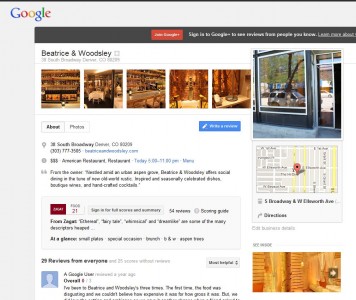 With the incredibly investment Google has made in it’s rich maps with interactive views of the world around us, in digital form (see this incredible “walk through” of a local Denver restaurant) and all of the data it’s storing on user interaction and reviews, I view this as not a way for Google to compete, but another jump ahead. Not unlike some similar functionality offered in Foursquare, users will be able to sort and filter search results by several criteria, including “your circles,” which will reveal places “touched” by friends. Currently this means reviews and posts, but could extend to check-ins later.
With the incredibly investment Google has made in it’s rich maps with interactive views of the world around us, in digital form (see this incredible “walk through” of a local Denver restaurant) and all of the data it’s storing on user interaction and reviews, I view this as not a way for Google to compete, but another jump ahead. Not unlike some similar functionality offered in Foursquare, users will be able to sort and filter search results by several criteria, including “your circles,” which will reveal places “touched” by friends. Currently this means reviews and posts, but could extend to check-ins later.
Google had originally hoped to make Places into interactive content pages that merchants would use regularly to communicate with customers and prospects. However that didn’t happen in part because of the limitations of Places pages themselves. Google+ Local pages are much more versatile and “social.” Indeed, it gives Google a local vehicle with functionality equivalent to Facebook and Twitter.
Google says there will be many more business features to come, in a post on the Google and Your Business Blog:Google+ Local pages are also more visually interesting. They enable the presentation of a wider variety of different types of information than Google Places allowed. They will permit local businesses to develop followers and message them, and to have all of the social interactions now available on Facebook and Twitter.
“We know many of you have already created a Google+ Page for your business, and have been hosting hangouts and sharing photos, videos and posts. We’re excited that we’ll soon extend these social experiences to more Google+ Local pages in the weeks and months ahead.”
Exploration of Search
If you click the new “Local” tab in Google+ you’re taken to a personalized local home (discovery) page, which offers a mix of, recommended, social and popular content. There are several variables that go into the content that appears on this page. The same two people in Denver won’t see the same results, though aspects of it may be the same.
It’s also interesting that Google has returned to a two search-box approach for Google+ Local, one box for your search query and the second for your geography. You can browse your “Local” page content or search as you normally would on Google or Google Maps. The integration of Zagat reviews, as well as the other social filters and features now make Google+ an arguably better local search destination than Google search or even Google Maps.
Instead of being asked to rate businesses along a 5 point star rating, users are now asked to fill out a more structured form (food, service, atmosphere/decor) and leave additional comments. Some of those online reviews may also make it back into Zagat’s site we have heard. That scoring system looks like this:
Google+ Local Pages Will Be Indexed!
The movement of Places pages to Google+ Local pages is taking place across all listings regardless of whether Places pages were claimed by business owners or not. However nothing on the back end will change immediately for businesses. You will still access all of your back end from the same old Google Places log in. However, business owners are effectively being pushed into social with more customer-interaction potential but also greater demands to learn how to use Google+ fully and effectively. Those who do will be rewarded. There’s a ton of SEO potential here. Most notably, unlike Google Places pages, these new Google+ Local pages will be indexed. In short, the content you have on your Google+ Local page is search-able now and can have viable impact on your SEO efforts.
What Does All This Mean?
Make no mistake, this is a major change to the very fabric of local search for both consumers and businesses. For the user, it will enhance the consumer experience with a relatively small adjustment and learning curve. People will be able to go on using Google as they have but get the benefit of the richer, more dynamic content and more in-depth Zagat ratings.
My guess is that Google hopes that millions of local merchants creating and enhancing dynamic pages and content can bring additional usage and greater engagement to Google+…the jury is still obviously out on that one.
Business owners will certainly have a more difficult transition than consumers, as they’re compelled now to pay attention to Google+ — in a big way. For the last several months, many have chosen to ignore Google+ or were quite simply ignorant to it’s existence. Not anymore. They now ignore Google+ at their own peril. Business owners will need to extend their web presence optimization strategy to include posting compelling, interesting and engaging content on a regular basis to Google + Local Pages, as well as the other places they are currently “playing”, like Twitter, Facebook and their own Blogs.

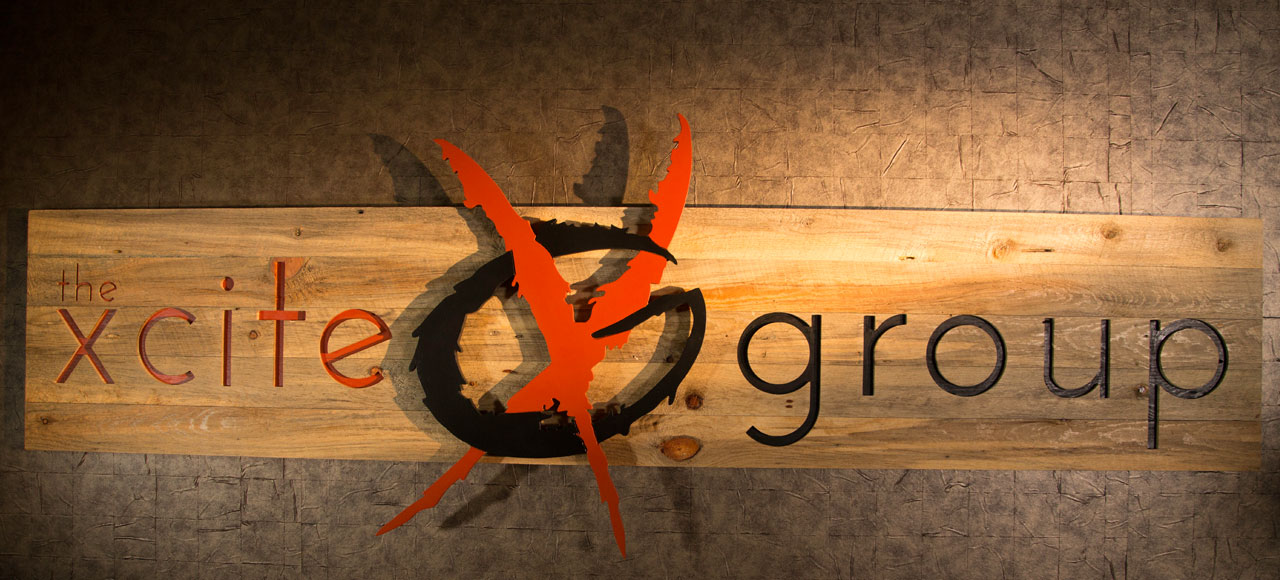



 8055 E Tufts Ave Ste 240
8055 E Tufts Ave Ste 240




